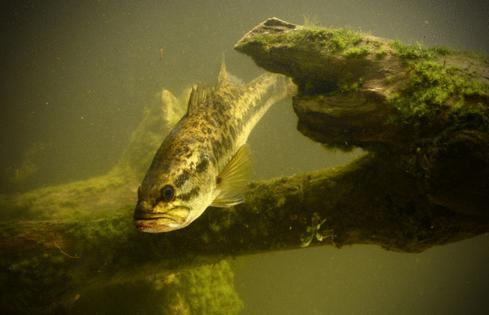California freshwater fish found to be teeming with parasites. How to keep from getting sick
Published in News & Features
LOS ANGELES — More than 90% of popular freshwater fish in Southern California are carrying human-infecting parasites, researchers say. This poses a significant danger for those who like to eat freshly caught freshwater fish. But there are ways to protect yourself.
The parasites are called trematodes. Two species of the flatworms were discovered in California's freshwater fish, according to a study published Tuesday in the Journal of Infectious Diseases. The tiny, flattened and sluglike creatures can cause gastrointestinal problems, weight loss and lethargy when a person eats an infected fish.
In some rare and severe cases, the parasites have caused strokes or heart attacks.
"Americans don't usually think about parasites when they eat freshwater fish because it hasn't historically been an issue here," said Ryan Hechinger, the study's senior author.
In fact, even when a person has fallen ill from a locally caught infected freshwater fish, their healthcare provider will typically ask if the patient has recently traveled outside of the United States, Hechinger said.
California wasn't this parasite's first home
Researchers identified two species of trematode: Haplorchis pumilio and Centrocestus formosanus.
These two parasite species have historically infected people in Southeast Asia who eat raw fish, crustaceans or vegetables that carry the parasite larvae.
A trematode has a very specific life cycle, leeching onto three hosts that include a freshwater snail, a fish and then a bird or human who ate the infected fish.
The parasite was probably carried to the U.S. by the red-rimmed melania, or Malaysian trumpet snail, which is host to a number of parasitic species and was introduced to the United States, Hechinger estimates, decades ago.
It inhabits "freshwater springs, streams, lakes and swamps," according to the Smithsonian Environmental Research Center, but can occasionally be found in "brackish and marine habitats, especially mangroves" (think the Everglades).
The snail first popped up in California in 1972 in a Riverside County ditch, according to the center.
Hechinger, through previous and new research, found that the snail and its associated trematode parasites can be widely found in lakes and reservoirs across the state.
He's identified the snails in Los Angeles, Imperial, Orange, Riverside, San Bernardino and San Diego counties.
Some fish harbor thousands of parasites
In summer and fall 2023, researchers, with the help of the California Department of Fish and Wildlife, analyzed fresh fish that were collected at five fishing localities in San Diego County: Miramar, Murray, Lower Otay and San Vicente reservoirs as well as Chollas Lake.
The fish included largemouth bass and bluegill.
Hechinger and his team found that 93% of all the fish in the study were infected with the H. pumilio parasite, with some individual fish harboring thousands of the parasites.
The second parasite, C. formosanus, was found at two of the five locations, where it occurred in 91% of the fish.
The parasites are each found on different parts of the fish. H. pumilio is found at the base of the fins and C. formosanus is found on the gills.
But the parasites can infect the muscles and connective tissue of the fish, Hechinger said, which is how a person eating it can get sick despite cutting off the head and fins.
"The other thing we have to remember," he said, "is the possibility of contamination on the food preparation surfaces and utensils."
How to protect yourself
The risk is real, but the precautions you can take against illness are straightforward.
Thorough cooking of any freshwater fish that could potentially be infected can prevent illness, according to the U.S. Food and Drug Administration.
If you choose to eat the fish raw, the agency advises you eat freshwater fish that has been previously frozen.
Freezing will kill parasites that may be present. However, the FDA said freezing doesn't kill all harmful germs, so the safest route is to thoroughly cook your seafood.
Some food prep is fishy
As part of this study, researchers conducted a survey of 125 YouTube videos with a total of 5 million views and found that 65% of these videos did not mention proper cooking or freezing of caught fish.
The lack of proper food preparation not only promotes the transmission of parasites but can also increase the odds of infection, Hechinger said.
©2025 Los Angeles Times. Visit at latimes.com. Distributed by Tribune Content Agency, LLC.







Comments